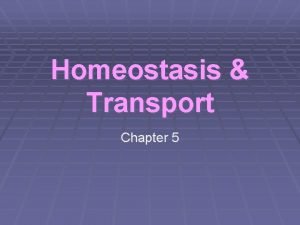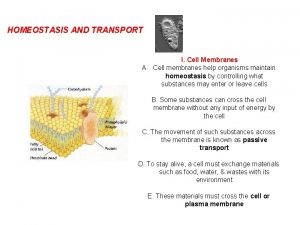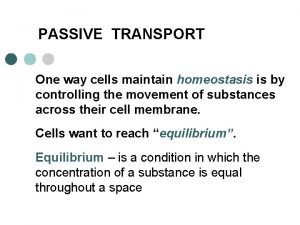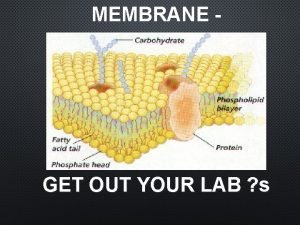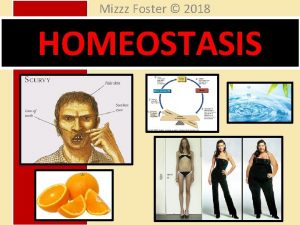Lesson Overview Homeostasis and Cells Lesson Overview 7







- Slides: 7

Lesson Overview Homeostasis and Cells Lesson Overview 7. 4 Homeostasis and Cells

Lesson Overview Homeostasis and Cells The Cell as an Organism unicellular organisms must achieve homeostasis To maintain homeostasis, unicellular organisms grow, respond to the environment, transform energy, and reproduce.

Lesson Overview Homeostasis and Cells The Cell as an Organism In terms of their numbers, unicellular organisms dominate life on Earth. Unicellular organisms include both prokaryotes and eukaryotes. Prokaryotes, especially bacteria, are remarkably adaptable and live almost everywhere—in the soil, on leaves, in the ocean, in the air, and even within the human body.

Lesson Overview Homeostasis and Cells Multicellular Life Differentiation- cells of multicellular organisms become specialized in structure & function The cells of multicellular organisms become specialized for particular tasks and communicate with one another in order to maintain homeostasis.

Lesson Overview Homeostasis and Cells Specialized Animal Cells Lung cells –cilia, have many mitochondria for energy Particles of dust, smoke, and bacteria are part of even the cleanest air. Specialized plant cells- pine pollen, to float & scatter seeds

Lesson Overview Homeostasis and Cells Levels of Organization specialized cells tissues organ system A tissue is a group of similar cells that performs a particular function. Each type of tissue performs an essential task to help the organ function. A group of organs that work together to perform a specific function is called an organ system EX: stomach, pancreas, digestive This division of labor allows the organism to maintain homeostasis.

Lesson Overview Homeostasis and Cells Cellular Communication Cells in multicellular organisms communicate by means of chemical signals that are passed from one cell to another. These cellular signals can speed up or slow down the activities of the cells that receive them EX: acetylcholine Receptor : Signaling molecules bind the cells receptors cell signals


